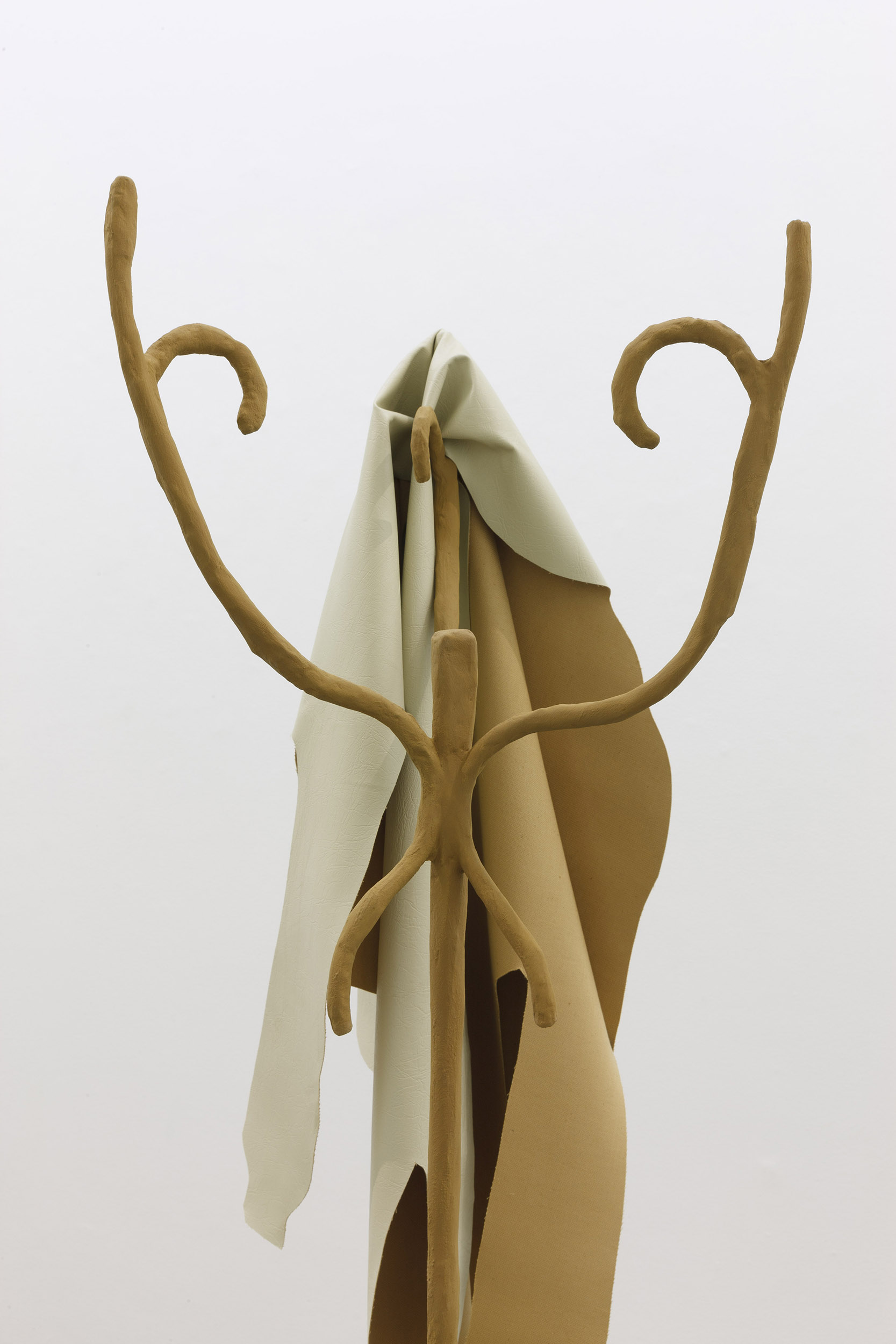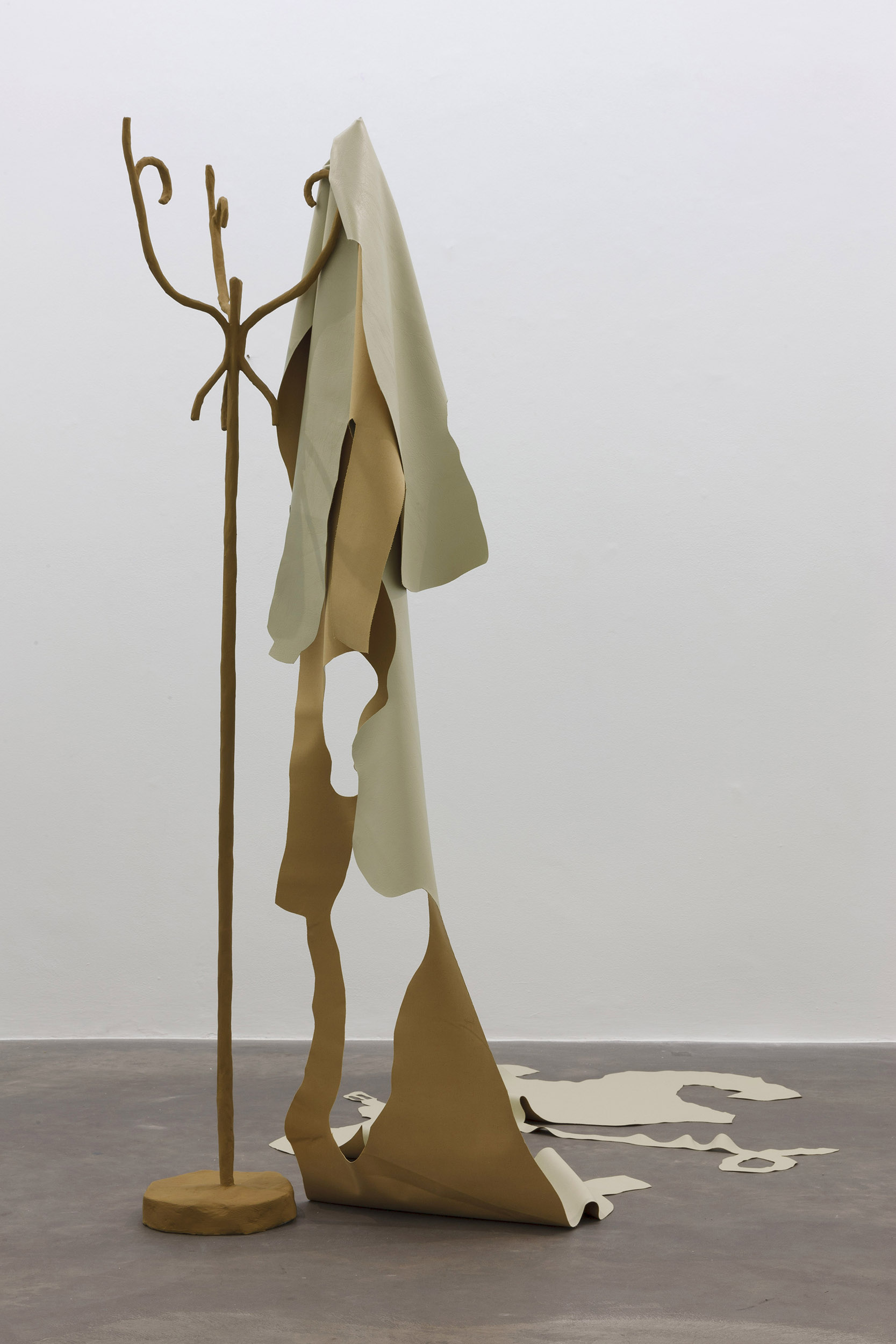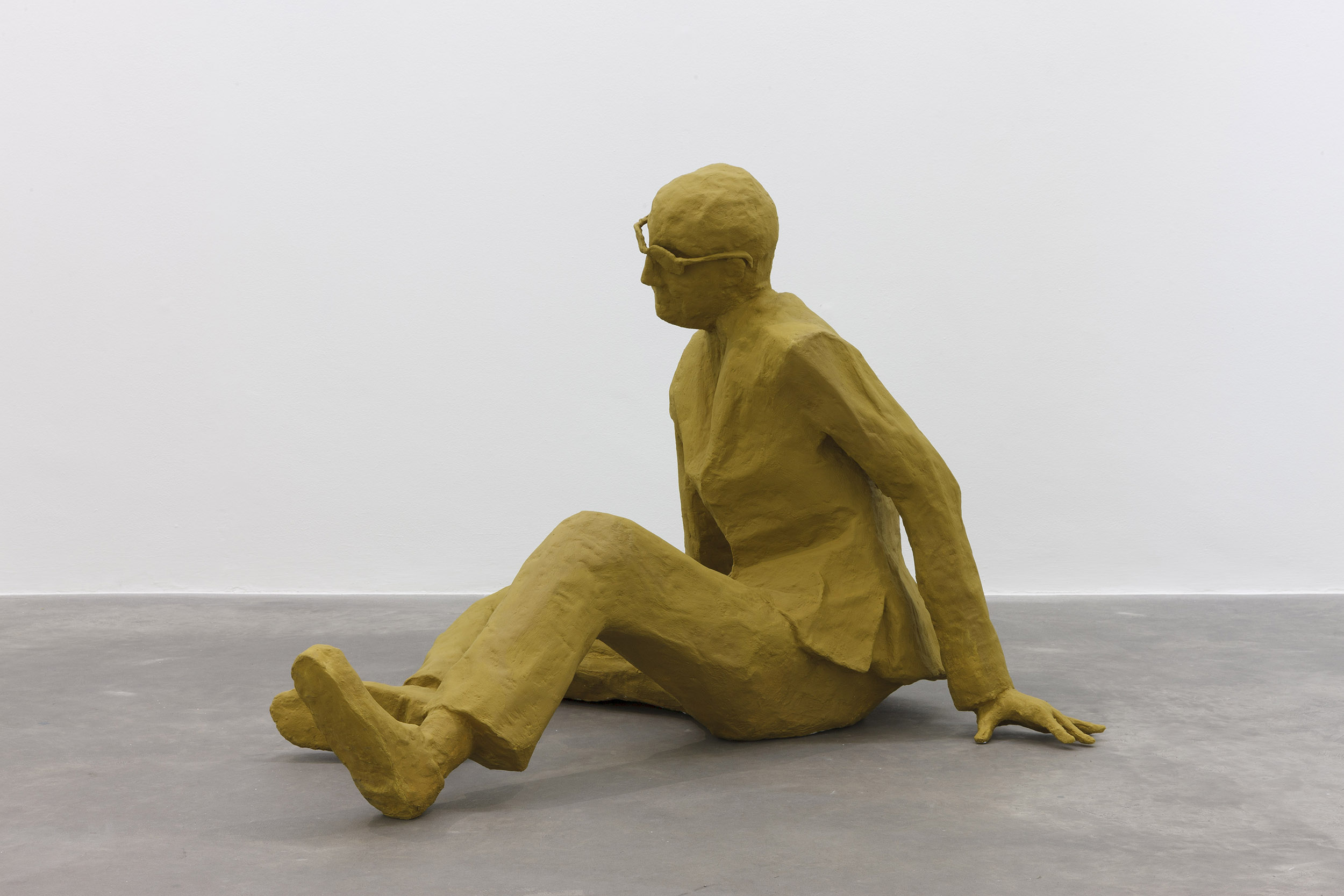
For Hannah Fitz, Áine McBride, Daniel Rios Rodriguez, Marcel Vidal, the gallery brings together the four named artists with a mix of sculptural and wall-hung works. Elements of interior space are utilized, not only in the structures of Fitz–for this show creating a new body of work that includes the impression of a coat stand, a sunglass-adorned man and a dramatically smoking cigarette. The selection is both clean and chaotic, with an economical colour palette shared between the four artists and a mix of both rigid and fluid forms.
You’ve created new work for the group show at Kerlin. Can you tell me a little about these pieces?
I’ve made a group of sculptures that all work within a reductive universality, a restrained taxonomy of colour, materiality and shape.

These works have been described as “acting more like a photograph or drawing than a sculpture”. Do you see them in this way, and do you also work in two dimensions when planning pieces?
I’m very much into what sort of things images are, how and in what ways they mess with the things they appear to show you. For me so far, the still images I’ve made don’t communicate that contortion in the way I want. Our eyes are too used to manipulated images. Instead I make things that stand up in the world, in a way that is very close to what might be expected of them. So, yes, I see them performing as images do, carrying out reductions and playing on misinterpretations.
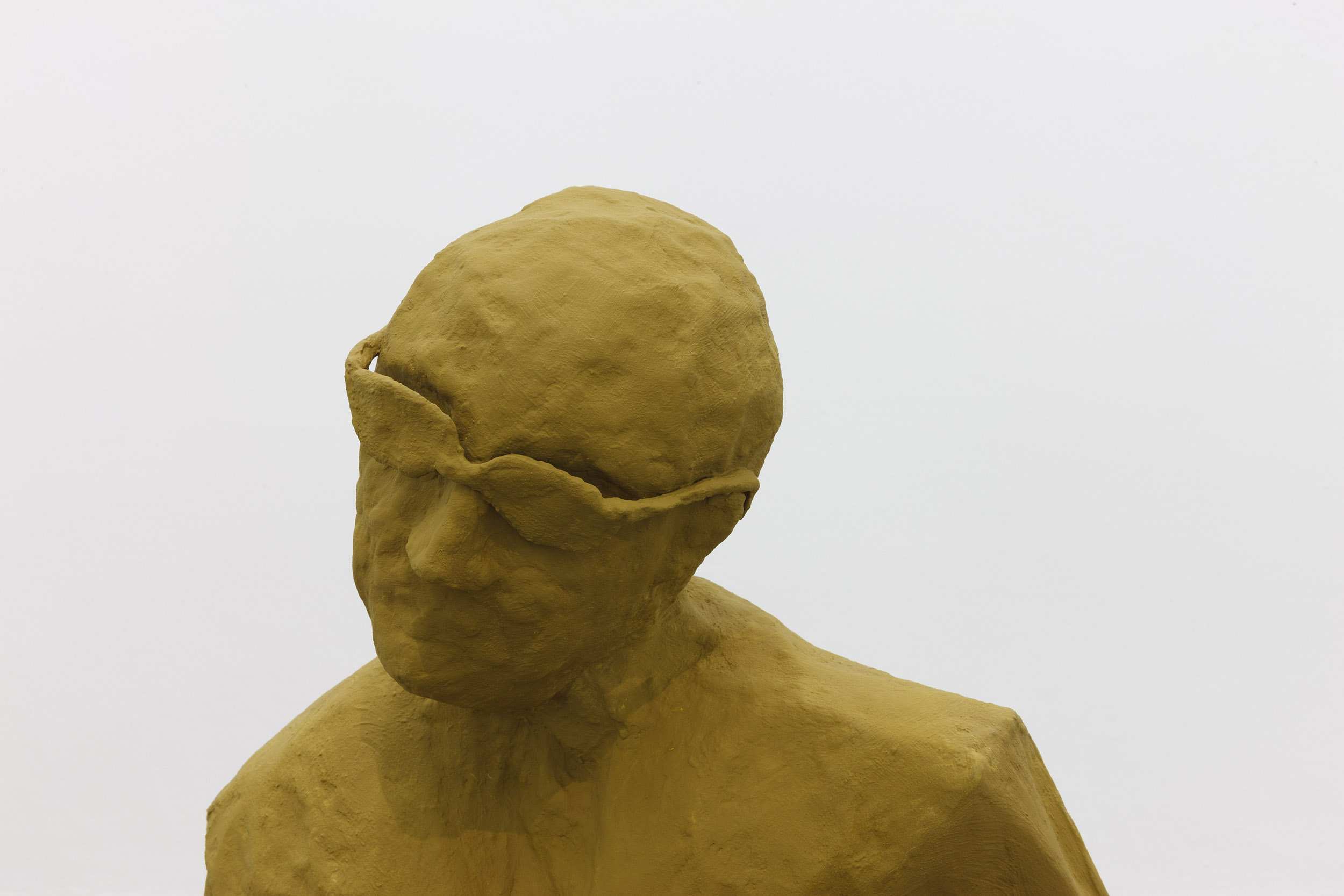
Your works purposefully avoid having a “finished” look. Is this, nonetheless, something you have to work to perfect? As you know your materials more and more is it harder to escape from?
The process and materials I use produce a rough, overworked surface. The sculptures have to, in every way, act out the distance in representation–you recognize an object but its construction lets you know it’s just playing that part. It has a lot to do with getting the tone right. I want to complicate how easy these things are to swallow. I think I’m suspicious of representations that use a sombre specialness as a suggestion of essence, reproducing objects that ask to be devoured rather than prodding at what it is that holds them together under our gaze. That’s maybe why I use cartoonish gestures; the curling smoke or big yellow beam of light are “try-hard”, even pathetic forms. The lurching hardness of a painted line of smoke mainly speaks to its own incapacity, it works only with the absence and comparable distance of the last time you might have seen smoke curling over itself.
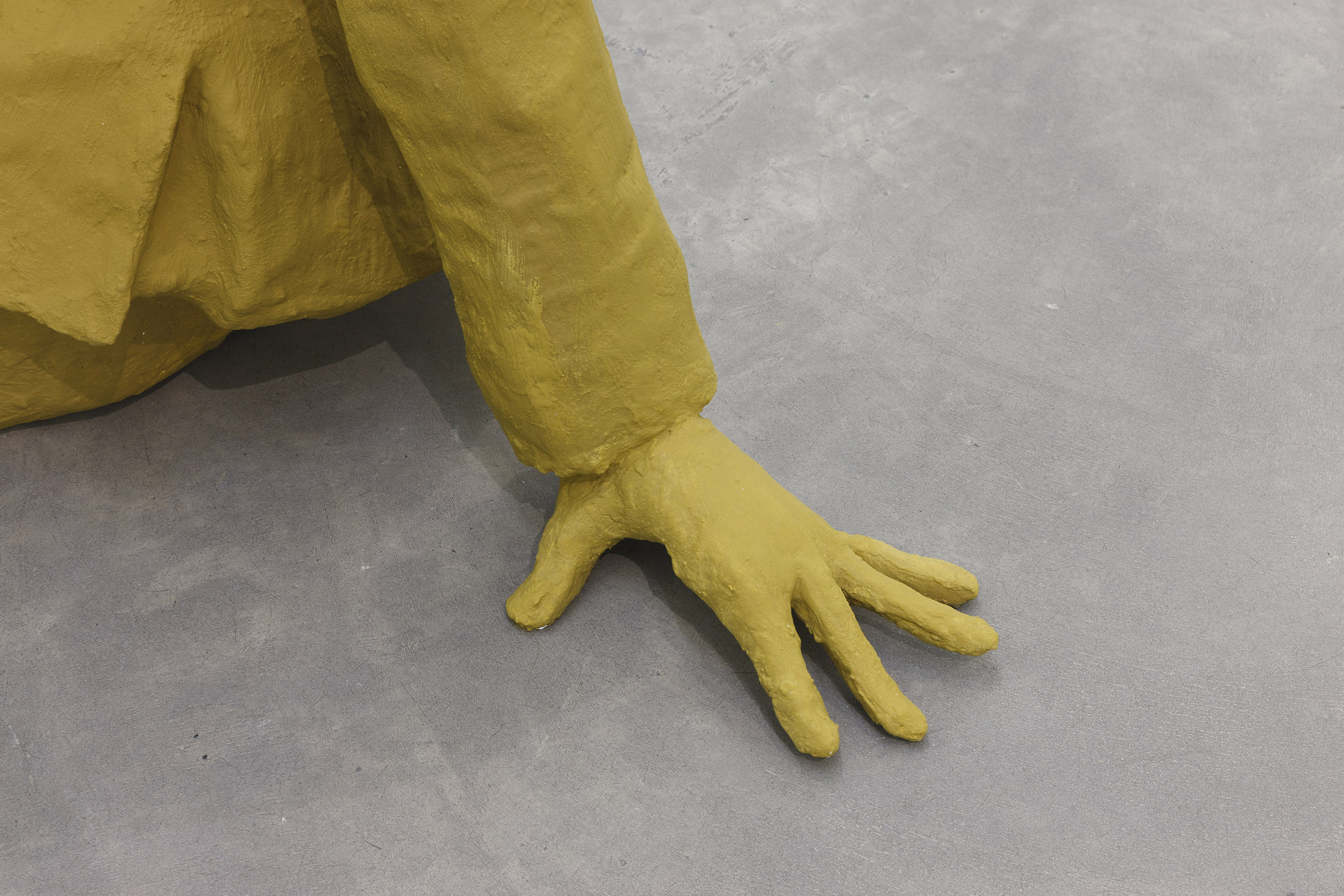
How do you work on a new series? Do you see all the pieces as being part of one whole?
The grouping is important–I’m excited about how they interact and undermine each other–but each piece does its own dance. I make them like this because I am interested in interdependence, how the identity of each is prey to its associations. It’s situatedness. They are corrupted by a commonality and each has to work within this constraint.

How do you see the role of the human in your work? Although humans themselves aren’t depicted–until this latest series–there are many signs of their activity—lights switched on, apples peeled, etc.
For the first time I have included a body in this series for Kerlin. In Bored with a Hole for NCAD Gallery, I had begun to think about the body as it is represented in sculpture. How any sculpture of a body is necessarily in some way a misinterpretation of a body. This is true for objects too, of course, and I like to exaggerate that as a sort of pathos. I realize that making an image is, in a small way, a violence. I work with things that have strong general identities so that my exaggeration of a malicious crossover into image does not make the symbol fall apart. All the sculptures I have made represent objects that have some very direct human relation, they are things that are frequent and familiar to us. I usually use the materials and colour to then underline where these things fall out of our direct use and into some exclusive set. First, suggesting a body, then excluding the body of the viewer. With this series I wanted to go further, to provide a body to answer the suggestion of the other works and to complicate the owning gaze of the viewer.
‘Hannah Fitz, Áine McBride, Daniel Rios Rodriguez, Marcel Vidal’ is showing until 26 August at Kerlin Gallery, Dublin. All images courtesy the artist and Kerlin Gallery kerlingallery.com
